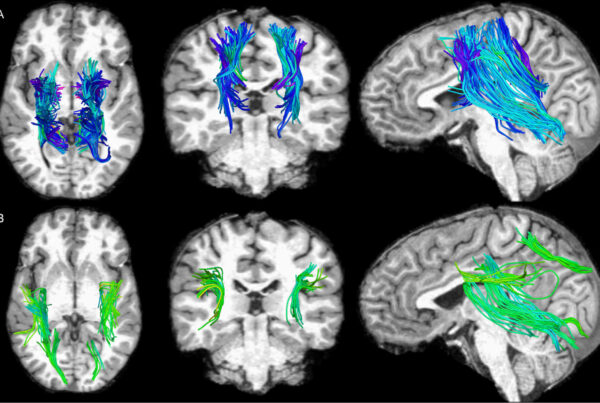
Associate Professor Sean Curran
Two recent USC studies in tiny worms could offer insights on how genetics and diet affect reproduction and lifespan in many other species, including humans.
Caenorhabditis elegans, or C. elegans, is a species of millimeter-long nematode worm that, at first glance, doesn’t appear to be very similar to mammals; they eat bacteria and are largely hermaphrodites that reproduce by self-fertilization. However, several genes in the worms have been found to be highly evolutionarily conserved, or found in other species, including humans, and the tiny worms are a very useful animal model for research, said USC Leonard Davis School of Gerontology Associate Professor Sean Curran.
How diets affect reproduction and lifespan
A recent publication by Curran, coauthored by PhD in Molecular Biology candidate Nicole Stuhr and published November 6 in Communications Biology, examines how changing the bacterial diet of C. elegans can change the development, reproduction, and metabolism of the animals. In the laboratory, C. elegans are fed monocultures of bacteria, usually the E. coli strain OP50 due to its wide availability; however, these diets don’t reflect the type of variety C elegans would have access to in the wild, Curran explained.
To diversify the worms’ diets, Stuhr and Curran provided the worms with E. coli strains OP50, HT115, and HB101 and also cultured three different microbial strains that were easily identifiable by color: methylobacterium, which appears red; xanthomonas, which is orange; and sphingomonas, which appears yellow. While the six diets would provide the same calorie content for the worms, the nutritional composition of each diet varied, and the researchers measured concentrations of glucose, glycerol, glycogen, triglyceride, and water to create nutritional profiles.
In worms fed the red and yellow diets, the researchers noted an increase in lifespan but a decrease in reproduction as compared to orange and the three E. coli diets. The team also saw differences in whether fats were deposited more in the body or in the reproductive cells of the worms as well as growth speed differences in the worms’ larval stages, indicating that the type of diet had major effects on development. The alterations caused by different bacterial diets were not only be seen in the diverse phenotypes that presented themselves, but also at the genetic level, causing fluctuations in expression of genes for multiple physiological processes, including development, fat content, reproduction, healthspan, and lifespan.
“Unlike humans, who can choose to be vegetarian, paleo, gluten-free, etc., there is not a defined diet for worms. This study introduces three new diets and compares them to the standard E. coli diets traditionally used. These diets have dramatic impact on healthspan and lifespan,” Curran said. “Our goal now is to determine what aspects of each diet is causal. These new diets will be a powerful tool in our genetic work to define gene-diet relationships quickly in the worm and then move these studies into human health and longevity.”
Exploring genes that affect fertility
In another recent study published November 9 in Scientific Reports, Curran and PhD in Molecular Biology candidate Amy Hammerquist explored the role of the MAFR-1 gene, which represses the production of the protein RNA polymerase III.
When the MAFR-1 gene was suppressed in C. elegans, the worms’ spermatids, or male sex cells, were smaller than normal and less successful in fertilization. However, when MAFR-1 expression was restored within the worms’ reproductive cells, the spermatids’ size and function were restored as well.
MAFR-1 is a homolog – an equivalent gene in a different species – of the gene Maf1, which is found throughout the animal kingdom, including in humans. Previous research has shown that disrupting Maf1 activity leads to, in addition to increased RNA polymerase III activity, an increase in intracellular fat abundance and, in some instances, altered lifespan, Curran said.
“Based on the high degree of conservation of Maf1 activity across species, our study may inform similar roles for Maf1 and RNA polymerase III in mammalian male fertility,” he said. “To the best of our knowledge, this is the first instance of manipulation of any Maf1 homolog in any individual tissue of a multicellular organism. Taken together, our findings suggest that Maf1 may have unique roles in unique tissues that warrant further investigation.”
The studies were funded by National Institutes of Health grants R01GM109028 and R01AG058610 to Curran, T32AG052374 and T32GM118289 to Stuhr, and T32AG000037 to Hammerquist.





